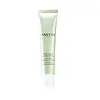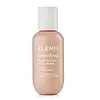What's inside
What's inside
 Key Ingredients
Key Ingredients

 Benefits
Benefits

 Concerns
Concerns

 Ingredients Side-by-side
Ingredients Side-by-side

Water
Skin ConditioningDicaprylyl Carbonate
EmollientBis-Ethylhexyloxyphenol Methoxyphenyl Triazine
Skin ConditioningDiethylamino Hydroxybenzoyl Hexyl Benzoate
UV FilterOctocrylene
UV AbsorberZinc Oxide
Cosmetic ColorantUndecane
EmollientEthylhexyl Triazone
UV AbsorberCI 77891
Cosmetic ColorantBambusa Arundinacea Stem Powder
AbrasiveCetearyl Alcohol
EmollientCetearyl Glucoside
EmulsifyingDiglycerin
HumectantTridecane
PerfumingSmithsonite Extract
AntioxidantPeumus Boldus Leaf Extract
MaskingGlycerin
HumectantSorbitan Isostearate
EmulsifyingSodium Stearoyl Glutamate
CleansingXanthan Gum
EmulsifyingBiosaccharide Gum-1
HumectantSodium Levulinate
Skin ConditioningGlyceryl Caprylate
EmollientSodium Anisate
AntimicrobialTocopherol
AntioxidantPolysorbate 20
EmulsifyingPolyacrylate-13
Acrylates/Ammonium Methacrylate Copolymer
Isopropyl Myristate
EmollientPolyisobutene
Butylene Glycol
HumectantPentylene Glycol
Skin ConditioningCitric Acid
BufferingTriethyl Citrate
MaskingSodium Chloride
MaskingO-Cymen-5-Ol
AntimicrobialChlorphenesin
AntimicrobialPhenoxyethanol
PreservativeParfum
MaskingCI 77499
Cosmetic ColorantCI 77491
Cosmetic ColorantCI 77492
Cosmetic ColorantWater, Dicaprylyl Carbonate, Bis-Ethylhexyloxyphenol Methoxyphenyl Triazine, Diethylamino Hydroxybenzoyl Hexyl Benzoate, Octocrylene, Zinc Oxide, Undecane, Ethylhexyl Triazone, CI 77891, Bambusa Arundinacea Stem Powder, Cetearyl Alcohol, Cetearyl Glucoside, Diglycerin, Tridecane, Smithsonite Extract, Peumus Boldus Leaf Extract, Glycerin, Sorbitan Isostearate, Sodium Stearoyl Glutamate, Xanthan Gum, Biosaccharide Gum-1, Sodium Levulinate, Glyceryl Caprylate, Sodium Anisate, Tocopherol, Polysorbate 20, Polyacrylate-13, Acrylates/Ammonium Methacrylate Copolymer, Isopropyl Myristate, Polyisobutene, Butylene Glycol, Pentylene Glycol, Citric Acid, Triethyl Citrate, Sodium Chloride, O-Cymen-5-Ol, Chlorphenesin, Phenoxyethanol, Parfum, CI 77499, CI 77491, CI 77492
Water
Skin ConditioningDicaprylyl Carbonate
EmollientCetearyl Alcohol
EmollientGlycerin
HumectantCaprylic/Capric Triglyceride
MaskingGlyceryl Stearate Se
EmulsifyingOctyldodecanol
EmollientOlus Oil
EmollientCaprylyl Glycol
EmollientMica
Cosmetic ColorantPropylene Glycol
HumectantCetyl Palmitate
EmollientPhenoxyethanol
PreservativePolyacrylate-13
Sorbitan Palmitate
EmulsifyingTocopherol
AntioxidantAlpha-Glucan Oligosaccharide
CleansingParfum
MaskingPolyisobutene
Disodium EDTA
Xanthan Gum
EmulsifyingSynthetic Fluorphlogopite
Sorbitan Oleate
EmulsifyingSaccharomyces/Xylinum/Black Tea Ferment
Skin ConditioningCamellia Sinensis Seed Oil
HumectantCandida Bombicola/Glucose/Methyl Rapeseedate Ferment
AntimicrobialPolysorbate 20
EmulsifyingSorbitan Isostearate
Emulsifying1,2-Hexanediol
Skin ConditioningTin Oxide
AbrasiveLinalool
PerfumingLimonene
PerfumingLactobacillus
Skin ConditioningZingiber Officinale Root Extract
MaskingGeraniol
PerfumingHydroxyethyl Ethylcellulose
EmulsifyingCitronellol
PerfumingSodium Hydroxide
BufferingSodium Citrate
BufferingCitric Acid
BufferingPotassium Sorbate
PreservativeRibes Nigrum Bud Oil
PerfumingBiotin
AntiseborrhoeicCI 77891
Cosmetic ColorantCI 77491
Cosmetic ColorantWater, Dicaprylyl Carbonate, Cetearyl Alcohol, Glycerin, Caprylic/Capric Triglyceride, Glyceryl Stearate Se, Octyldodecanol, Olus Oil, Caprylyl Glycol, Mica, Propylene Glycol, Cetyl Palmitate, Phenoxyethanol, Polyacrylate-13, Sorbitan Palmitate, Tocopherol, Alpha-Glucan Oligosaccharide, Parfum, Polyisobutene, Disodium EDTA, Xanthan Gum, Synthetic Fluorphlogopite, Sorbitan Oleate, Saccharomyces/Xylinum/Black Tea Ferment, Camellia Sinensis Seed Oil, Candida Bombicola/Glucose/Methyl Rapeseedate Ferment, Polysorbate 20, Sorbitan Isostearate, 1,2-Hexanediol, Tin Oxide, Linalool, Limonene, Lactobacillus, Zingiber Officinale Root Extract, Geraniol, Hydroxyethyl Ethylcellulose, Citronellol, Sodium Hydroxide, Sodium Citrate, Citric Acid, Potassium Sorbate, Ribes Nigrum Bud Oil, Biotin, CI 77891, CI 77491
Ingredients Explained
These ingredients are found in both products.
Ingredients higher up in an ingredient list are typically present in a larger amount.
Cetearyl alcohol is a mixture of two fatty alcohols: cetyl alcohol and stearyl alcohol. It is mainly used as an emulsifier. Emulsifiers help prevent the separation of oils and products. Due to its composition, it can also be used to thicken a product or help create foam.
Cetearyl alcohol is an emollient. Emollients help soothe and hydrate the skin by trapping moisture.
Studies show Cetearyl alcohol is non-toxic and non-irritating. The FDA allows products labeled "alcohol-free" to have fatty alcohols.
This ingredient is usually derived from plant oils such as palm, vegetable, or coconut oils. There is debate on whether this ingredient will cause acne.
Due to the fatty acid base, this ingredient may not be Malassezia folliculitis safe.
Learn more about Cetearyl AlcoholCi 77491 is also hydrated iron III oxide. It's sole purpose is to give a red/pink hue to products.
Iron III oxides are classified as inorganic chemicals for coloring.
Synthetically created Ci 77491 is considered safer than those naturally found. This is because the synthetically created version may contain less impurities. Iron oxides are generally non-toxic and non-allergenic.
Learn more about CI 77491Ci 77891 is a white pigment from Titanium dioxide. It is naturally found in minerals such as rutile and ilmenite.
It's main function is to add a white color to cosmetics. It can also be mixed with other colors to create different shades.
Ci 77891 is commonly found in sunscreens due to its ability to block UV rays.
Learn more about CI 77891Citric Acid is an alpha hydroxy acid (AHA) naturally found in citrus fruits like oranges, lemons, and limes.
Like other AHAs, citric acid can exfoliate skin by breaking down the bonds that hold dead skin cells together. This helps reveal smoother and brighter skin underneath.
However, this exfoliating effect only happens at high concentrations (20%) which can be hard to find in cosmetic products.
Due to this, citric acid is usually included in small amounts as a pH adjuster. This helps keep products slightly more acidic and compatible with skin's natural pH.
In skincare formulas, citric acid can:
While it can provide some skin benefits, research shows lactic acid and glycolic acid are generally more effective and less irritating exfoliants.
Most citric acid used in skincare today is made by fermenting sugars (usually from molasses). This synthetic version is identical to the natural citrus form but easier to stabilize and use in formulations.
Read more about some other popular AHA's here:
Learn more about Citric AcidDicaprylyl Carbonate comes from carbonic acid and caprylyl alcohol, a fatty alcohol. It is an emollient and gives skin a velvet feel. The sources of Dicaprylyl Carbonate may be synthetic or from animals.
As an emollient, Dicaprylyl Carbonate creates a film on the skin. This film traps moisture in, keeping your skin soft and hydrated.
Glycerin is already naturally found in your skin. It helps moisturize and protect your skin.
A study from 2016 found glycerin to be more effective as a humectant than AHAs and hyaluronic acid.
As a humectant, it helps the skin stay hydrated by pulling moisture to your skin. The low molecular weight of glycerin allows it to pull moisture into the deeper layers of your skin.
Hydrated skin improves your skin barrier; Your skin barrier helps protect against irritants and bacteria.
Glycerin has also been found to have antimicrobial and antiviral properties. Due to these properties, glycerin is often used in wound and burn treatments.
In cosmetics, glycerin is usually derived from plants such as soybean or palm. However, it can also be sourced from animals, such as tallow or animal fat.
This ingredient is organic, colorless, odorless, and non-toxic.
Glycerin is the name for this ingredient in American English. British English uses Glycerol/Glycerine.
Learn more about GlycerinParfum is a catch-all term for an ingredient or more that is used to give a scent to products.
Also called "fragrance", this ingredient can be a blend of hundreds of chemicals or plant oils. This means every product with "fragrance" or "parfum" in the ingredients list is a different mixture.
For instance, Habanolide is a proprietary trade name for a specific aroma chemical. When used as a fragrance ingredient in cosmetics, most aroma chemicals fall under the broad labeling category of “FRAGRANCE” or “PARFUM” according to EU and US regulations.
The term 'parfum' or 'fragrance' is not regulated in many countries. In many cases, it is up to the brand to define this term.
For instance, many brands choose to label themselves as "fragrance-free" because they are not using synthetic fragrances. However, their products may still contain ingredients such as essential oils that are considered a fragrance by INCI standards.
One example is Calendula flower extract. Calendula is an essential oil that still imparts a scent or 'fragrance'.
Depending on the blend, the ingredients in the mixture can cause allergies and sensitivities on the skin. Some ingredients that are known EU allergens include linalool and citronellol.
Parfum can also be used to mask or cover an unpleasant scent.
The bottom line is: not all fragrances/parfum/ingredients are created equally. If you are worried about fragrances, we recommend taking a closer look at an ingredient. And of course, we always recommend speaking with a professional.
Learn more about ParfumPhenoxyethanol is a preservative that has germicide, antimicrobial, and aromatic properties. Studies show that phenoxyethanol can prevent microbial growth. By itself, it has a scent that is similar to that of a rose.
It's often used in formulations along with Caprylyl Glycol to preserve the shelf life of products.
Polyacrylate-13 is a type of acrylate polymer. Acrylate polymers are commonly used as adhesives in cosmetics.
Polyacrylate-13 creates a film to protect the skin. It is also used to thicken and stabilize a product. It works by making water a gel-like consistency. This gel consistency helps suspend particles.
Polyacrylate-13 is a copolymer of acrylic acid, acrylamide, sodium acrylate, sodium acryloyldimethyltaurate monomers
Learn more about Polyacrylate-13Polyisobutene is a synthetic polymer made from isobutene.
It is a film-forming agent and helps bind ingredients together.
Polyisobutene is not absorbed by the skin.
Learn more about PolyisobutenePolysorbate 20 is made by combining ethoxylation of sorbitan, ethylene oxide, and lauric acid. It is a mild cleansing agent, surfactant, and emulsifier.
As a surfactant, it helps collect dirt and oils for washing. Emulsifiers prevent oils and water from separating.
Polysorbate 20 also adds scent to a product. Since it is made using sorbitol, it has a sweet scent. Sorbitol can also be found in fruits such as apples and peaches.
The lauric acid used to create Polysorbate 20 is often derived from coconuts.
Polysorbate 20 may not be fungal acne safe.
Learn more about Polysorbate 20Sorbitan Isostearate is an emulsifer and cleaning agent. It is created from isostearic acid and sorbitol.
As an emulsifier, Sorbitan Isostearate prevents oils and water from separating.
Due to its isostearic acid base, it may not be safe for Malassezia or fungal acne.
Learn more about Sorbitan IsostearateTocopherol (also known as Vitamin E) is a common antioxidant used to help protect the skin from free-radicals and strengthen the skin barrier. It's also fat soluble - this means our skin is great at absorbing it.
Vitamin E also helps keep your natural skin lipids healthy. Your lipid skin barrier naturally consists of lipids, ceramides, and fatty acids. Vitamin E offers extra protection for your skin’s lipid barrier, keeping your skin healthy and nourished.
Another benefit is a bit of UV protection. Vitamin E helps reduce the damage caused by UVB rays. (It should not replace your sunscreen). Combining it with Vitamin C can decrease sunburned cells and hyperpigmentation after UV exposure.
You might have noticed Vitamin E + C often paired together. This is because it is great at stabilizing Vitamin C. Using the two together helps increase the effectiveness of both ingredients.
There are often claims that Vitamin E can reduce/prevent scarring, but these claims haven't been confirmed by scientific research.
Learn more about TocopherolWater. It's the most common cosmetic ingredient of all. You'll usually see it at the top of ingredient lists, meaning that it makes up the largest part of the product.
So why is it so popular? Water most often acts as a solvent - this means that it helps dissolve other ingredients into the formulation.
You'll also recognize water as that liquid we all need to stay alive. If you see this, drink a glass of water. Stay hydrated!
Learn more about WaterXanthan gum is used as a stabilizer and thickener within cosmetic products. It helps give products a sticky, thick feeling - preventing them from being too runny.
On the technical side of things, xanthan gum is a polysaccharide - a combination consisting of multiple sugar molecules bonded together.
Xanthan gum is a pretty common and great ingredient. It is a natural, non-toxic, non-irritating ingredient that is also commonly used in food products.
Learn more about Xanthan Gum